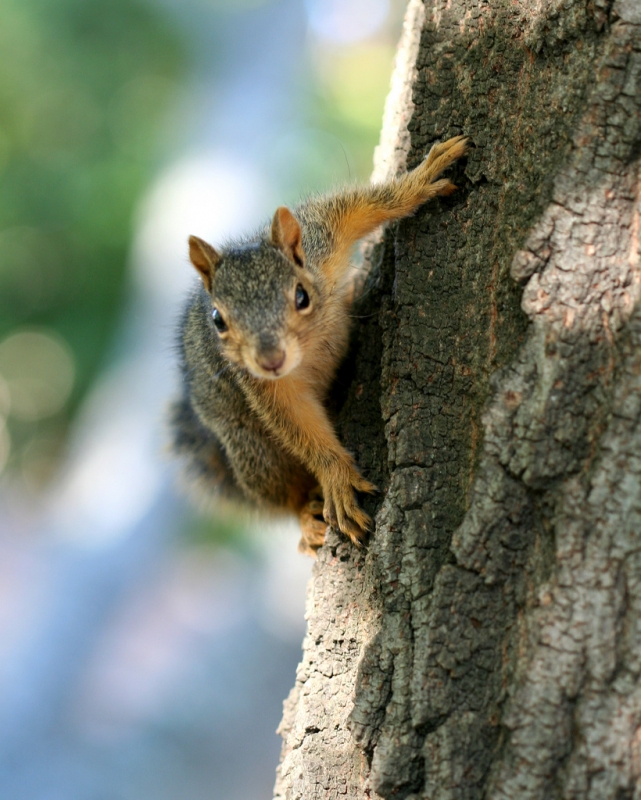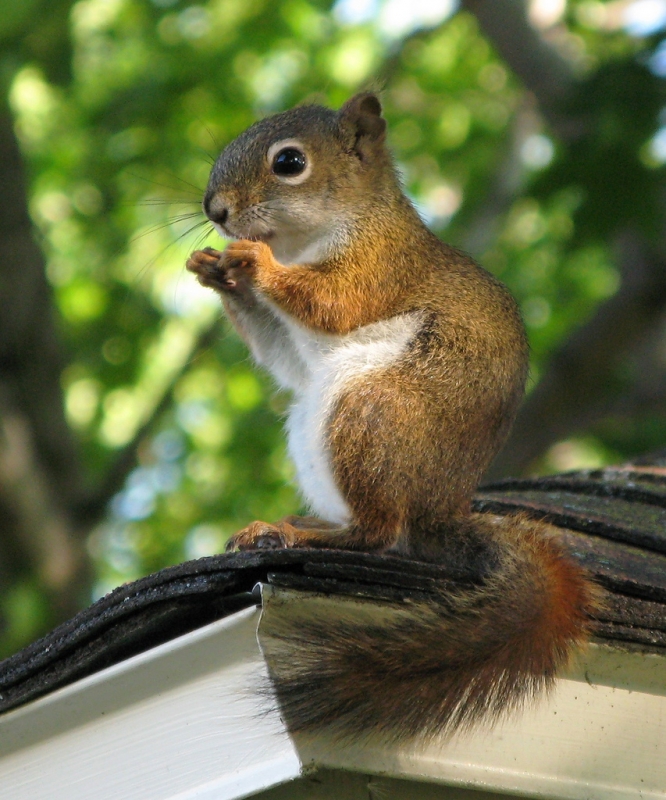Squirrel Removal
What is a squirrel?
Squirrels, which belong to the Sciuridae family, are bushy-tailed rodents that can be found all over the globe.
With more than 200 species, squirrels are categorized into three types according to the Integrated Taxonomic Information System (ITIS). These are ground squirrels, tree squirrels, and flying squirrels.
Three can be broken down further into many types such as Fox, Pygmy, Albino, Antelope, Mountain Tree, Spotted, American Red, Grey, Douglas, Northern Flying, Arizona Grey, Southern, Idaho, Albert’s, Arctic Ground, Franklin, Rock, Richardson, and Black and White squirrels.

Photo credit: John-Morgan / Foter.com / CC BY
Squirrel Characteristics
The colors of squirrels are variable and they have soft and silky fur in general. The thickness also varies per species. Their fore limbs are generally shorter than their hind limbs, with 4 to 5 toes on each paw. Their paws have soft pads beneath and they have poorly developed thumb. Tree squirrels can easily descend from a tree head-first. Amazingly, they can rotate their ankles up to 180 degrees to enable their hind paws to grip a tree bark.
Squirrel Behavior
Squirrels give birth from three to six young once or twice a year, depending on its species. These young are born toothless, blind, and naked.
Female squirrels looks after their babies in most species. These nurturing stops around 6 to 10 weeks of age when the young become sexually mature before their first year ends.
The tree-dwelling species are more solitary compared to the ground-dwelling ones which often live in well-developed colonies.
Where Do Squirrels Live?
Typically, tree squirrels live in wooded areas while ground squirrels dig burrows. These burrows are a system of tunnels mapped underground in which they hibernate during the winter to keep them warm.
Flying squirrels like to make their homes in nests or tree holes. They use their muscle membrane to get from the tree to the ground or from a single tree to another. This muscle membrane is found between their body and legs allowing them to glide into the air. Generally, they can glide up to 48 meters (160 feet) making them look like flying when they are actually gliding.
What Can You Get With Squirrel Dung?
Squirrels feces are source of salmonella and Leptospirosis, a bacterial infection that manifests like a mild flu illness associated with headaches and other pains along with chills.
Serious cases of Leptospirosis may develop internal bleeding and organ failure which become fatal and life threatening. Mild cases can be treated with antibiotics however severe cases require hospital admission.
The indigenous population of red squirrels had been decimated by the “pox virus” which is carried by the grey squirrels. This virus is harmless to grey squirrels but deadly to red.
Due to the bad hygiene around the feeders, squirrels living at the feeding stations have contracted coccidiosis. These parasites live in the guts of the squirrels.
It can be prevented by regularly cleaning the feeders.
Damage
Occasionally, squirrels damage forest trees by eating barks from trunks and branches. Fox squirrels damage pines and loblolly in the Southeast while pine squirrels damage jack pine, Ponderosa pine, and paper birch.
Squirrels tend to eat nuts prematurely which can damage nut orchards. They also carry off mature nuts aside from eating premature ones. Fruit orchards in New England have problems when pine squirrels destroy ripe pears and eat ovaries of cherry blossoms.

Photo credit: Gilles Gonthier / Foter.com / CC BY
In urban areas, squirrels travel over power lines causing the transformers to get short. They also enter buildings, gnaw on wires, and build nests in the attics. Their favorite is to chew holes in maple syrup production pipelines.
Since squirrels look for nuts and bury them by digging holes, they occasionally damage lawns. Ornamental trees and shrubbery plants in the yards are no exception. If they can chew it, they’d give it a go. Feeders intended for birds attract squirrels and they sometimes chew the wires on the cages creating large holes that enables them to enter. Flying squirrels don’t have to make holes to enter the cages hence they are most likely to eat nesting birds.
In gardens, squirrels may feast on grains such as corn, mature fruits, or planted seeds.
Squirrel Removal, Prevention and Control Methods
Squirrel Exclusion
To prevent squirrels from power poles and isolated trees, you can encircle them with a two-foot wide metal fence six feet off the ground. Since squirrels can travel through wires, install around two to three inches in diameter plastic pipes.
Inspection attics and close holes but be careful not to lock a squirrel inside. It is best to contact a wildlife removal expert to ensure that there are no squirrels left in the house before your attic restoration.
Habitat Modification
To prevent squirrels from jumping into the roof, you can trim the limbs of the trees from six to eight feet away from buildings.
Squirrel Trapping
If you got persistent squirrel problems, don’t hesitate to ask the help of the experts. Contact your local wildlife removal company as they know how to exclude squirrels safely and effectively. If you don’t know any wildlife removal experts in your area, start by calling the number below. We’ll be happy to assist you!
Squirrel Removal – Squirrel Trapping
Anytime Wildlife Control
219-464-7966
